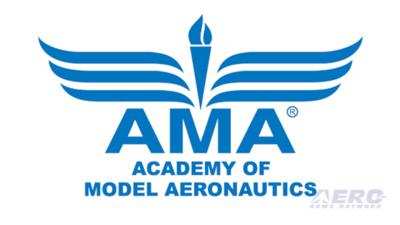Thu, Oct 04, 2018
Measure Passed Wednesday Expected To Be Signed By President Trump Soon
The Academy of Model Aeronautics is continuing to analyze the FAA Reauthorization Act of 2018, passed by the House last week, by the Senate Wednesday, and which is expected to be signed by the President soon. The group says there are some pluses and minuses in the bill for those who enjoy flying model airplanes.

Once this legislation is enacted into law, there will be a transition period which means the hobby will still operate under elements of Section 336 for the coming weeks, months, or possibly years, the AMA said on its Government Relations blog.
While AMA says some of the changes are positive, and include provisions that organization has championed, there are other changes AMA does not support. "We will continue to advocate for a resolution that does not harm our hobby. Thank you to the AMA members who wrote Congress, which opened doors for AMA to petition for changes," the association said.
The FAA Reauthorization Act of 2018 includes the following positive provisions and improvements:
- The five-mile airport notification rings are removed, which was a burdensome and often misinterpreted mandate.
- Congress more clearly defines community-based organizations (CBOs) and tasks the FAA to recognize CBOs.
- CBOs, like AMA, are given a more prominent role in shaping future regulations.
- Congress codifies elements of AMA’s safety programming into law, including the use of first person view.
- There are no prescriptive Remote ID equipage mandates, which allows AMA to work with the FAA and others in Washington on a reasonable approach and threshold for this potential requirement.
- Congress allocated $1 million every year to help support education campaigns such as Know Before You Fly, which AMA co-founded.
- Congress recognizes the distinction between members of a CBO, like AMA, and those “outside the membership, guidelines, and programming” of a CBO. Congress tasks the FAA to consider different operating parameters for this non-CBO community.
At the same time, the legislation includes several problematic provisions. These issues must be addressed through legislation or regulatory changes:
- The bill does not stop irresponsible drone operators – it only harms our safe and long-standing model aviation community, which has posed no new risk.
- The bill removes the model aircraft definition and instead adopts a one-size-fits-all approach to regulation that lumps all hobbyists, toys, and the recreational community into one category – everything is simply unmanned aircraft systems (UAS).
- With no justification, AMA members can no longer fly over 400 feet in class G (rural airspace).
- This will harm or kill our sailplane, turbine, aerobatic, and large model aircraft communities, which accounts for over 30% of our operations.
- The 400-foot altitude cap also excludes AMA and the USA from participating or hosting many world aeromodeling events sanctioned by the FAI through the AMA and NAA.
- This bill curtails events and harms charities, stifling youth involvement in STEM education. All of AMA’s language to protect middle school and high school STEM aeromodeling use need reinserted.
- The legislation includes testing mandates, which raises many concerns. Federal and state regulations could hinder youth from participating in the testing requirement therefore denying them enjoyment of our hobby.
- The bill opens the door to restrict our operations to flying sites.
"In the meantime, we are already working behind-the-scenes to minimize the impact of this bill and advocate for a lighter regulatory touch on our hobby," the AMA said in a message posted on its website. "In fact, we anticipate there will be many opportunities to work with the FAA on protecting and preserving our hobby in the future."
(Source: AMA. Image from file)
More News
Airbus Racer Demonstrator Makes Inaugural Flight Airbus Helicopters' ambitious Racer demonstrator has achieved its inaugural flight as part of the Clean Sky 2 initiative, a corners>[...]
A little Bit Quieter, Said Testers, But in the End it's Still a DA40 Diamond Aircraft recently completed a little pilot project with Lufthansa Aviation Training, putting a pair of >[...]
Line Up And Wait (LUAW) Used by ATC to inform a pilot to taxi onto the departure runway to line up and wait. It is not authorization for takeoff. It is used when takeoff clearance >[...]
Contributing To The Accident Was The Pilot’s Use Of Methamphetamine... Analysis: The pilot departed on a local flight to perform low-altitude maneuvers in a nearby desert val>[...]
From 2015 (YouTube Version): Overcoming Obstacles To Achieve Their Dreams… At EAA AirVenture 2015, FedEx arrived with one of their Airbus freight-hauling aircraft and placed>[...]
 Airbus Racer Helicopter Demonstrator First Flight Part of Clean Sky 2 Initiative
Airbus Racer Helicopter Demonstrator First Flight Part of Clean Sky 2 Initiative Diamond's Electric DA40 Finds Fans at Dübendorf
Diamond's Electric DA40 Finds Fans at Dübendorf ANN's Daily Aero-Term (04.23.24): Line Up And Wait (LUAW)
ANN's Daily Aero-Term (04.23.24): Line Up And Wait (LUAW) NTSB Final Report: Extra Flugzeugbau GMBH EA300/L
NTSB Final Report: Extra Flugzeugbau GMBH EA300/L Classic Aero-TV: 'Never Give Up' - Advice From Two of FedEx's Female Captains
Classic Aero-TV: 'Never Give Up' - Advice From Two of FedEx's Female Captains



